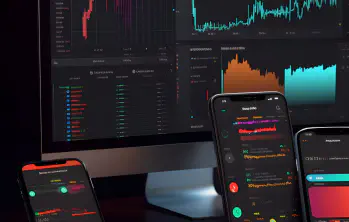Unpacking FINRA’s Annual Regulatory Oversight Report: Findings, failings and best practices from 2024
The Financial Industry Regulatory Authority (FINRA) has published their latest (2024) Annual Regulatory Oversight Report (the Report).
Member firms are encouraged to incorporate relevant elements of the report’s findings into their compliance programs in a manner tailored to its activities. In this blog, we break down the findings and key recommendations related to manipulative trading that member firms should consider as they plan for the year ahead.
Threshold calibration of surveillance controls
Robust, data-driven threshold calibration has long been a regulatory expectation of a firm’s trade surveillance system, but this year’s report emphasizes the importance of frequent reassessment to reflect the rapid evolution of market conditions. Static thresholds can leave firms vulnerable, particularly when changes in customer behavior or market dynamics go unaddressed.
“Noteworthy” failures identified by FINRA
FINRA identified several recurring issues in some firms’ threshold calibration practices, including:
- Inadequate design: Thresholds were not “reasonably designed” to detect manipulative trading activities. Firms failed to account for factors such as market class, security type, and inclusion of customer and proprietary trading data, often resulting in thresholds that were too high or too low.
- Infrequent assessment: Firms did not evaluate thresholds often enough, missing critical changes in market conditions or their customer base.
Best practices for threshold calibration
Comprehensive data analysis
Regularly review customer and proprietary trading data to detect schemes like cross-market manipulation. This includes analyzing patterns in correlated securities such as stocks, exchange-traded products (ETPs), and options.
Tailor surveillance systems by product class
Adapt supervisory systems to address the unique risks associated with different types of trading activity. For example, thresholds should reflect the nuances of manipulative order entry and trading in listed and OTC equities, options, and fixed-income products like Treasuries.
Prioritise dynamic adjustments
Establish a framework for periodic reassessment, ensuring thresholds remain aligned with market risks and firm-specific exposures.
The importance of holistic surveillance
FINRA underscores the need for multi-dimensional surveillance that minimizes blind spots by monitoring trading activity across customers, platforms, and time frames. Firms are urged to focus on coordinated or long-term manipulation strategies, particularly during securities distribution and aftermarket activities.
“Noteworthy” surveillance deficiencies highlighted by FINRA
Inadequate Written Supervisory Procedures (WSPs)
Many firms lacked clear processes for detecting and escalating manipulative conduct. WSPs often failed to account for diverse order flows, such as those from retail, institutional, proprietary, or foreign sources.
Surveillance gaps
Firms did not adequately monitor for manipulation patterns, review exception reports, or document findings. External sources of red flags, such as regulatory inquiries or alerts, were underutilized.
Best practices for holistic surveillance
Enhanced detection frameworks
Tailor WSPs to ensure oversight of all order flows, including proprietary and cross-border activities.
Make use of external data
Incorporate insights from regulatory inquiries, third-party alerts, and public data to identify additional red flags.
Training and escalation protocols
Train staff comprehensively on identifying and addressing manipulative trading patterns. Establish clear escalation and resolution processes for flagged activities to ensure swift and effective action.
Reviewing Pre- and Post-Trade controls
FINRA highlights the role of trade surveillance data in shaping firms’ broader risk management strategies. Shifts in customer trading behavior should prompt firms to reassess pre- and post-trade supervisory controls to maintain consistency across their entire compliance framework.
Typologies and practices: Enhancing surveillance programs
FINRA’s findings also call attention to specific trading typologies, emphasising the need for firms to address these challenges through robust, tailored surveillance systems:
Momentum ignition trading
- Layering and spoofing: Detecting non-bona fide orders placed to bait market participants into reacting and executing trades on the opposite side of the market.
- Cross-product manipulation: Monitoring transactions that manipulate the price of an underlying security, influencing the pricing of overlying options positions. This includes strategies such as marking the close or mini-manipulation.
Wash trading
- Monitoring related accounts: Identifying and monitoring accounts acting in concert, as flagged in wash/pre-arranged trading surveillance reports.
- Account opening documentation: Reviewing trading activity in relation to the information provided during account opening to detect potential wash trading aimed at collecting liquidity rebates.
Exchange-traded products (ETPs)
FINRA highlights the need for robust supervisory systems to prevent the misuse of material, non-public information and detect manipulative strategies specific to ETPs. Best practices include:
- Establishing strong information barriers to prevent data leakage and misuse of material, non-public information.
- Reviewing trading activities that exploit ETP-specific processes, such as creation/redemption mechanisms and information leakage related to portfolio composition files.
Dynamic solutions for dynamic risks
Antiquated trade surveillance approaches often fail due to their reliance on one-size-fits-all threshold calibration. Diverse trading characteristics across instruments - ranging from AIM-listed stocks to FTSE 100 companies, or government and corporate bonds - render uniform thresholds inherently problematic. For instance, a price movement that may indicate suspicious activity in one asset class could represent normal volatility in another.
eflow Global’s TZTS Trade Surveillance solution addresses this challenge by offering dynamic and adaptable configurations. Leveraging advanced analytics, TZTS can be customized to market abuse typologies while considering key trading variables, such as:
- Assets traded: Tailoring controls to the specific characteristics of different asset classes.
- Actors involved: Accounting for variations in behavior between institutional and retail participants.
- Trading methods: Monitoring diverse strategies, from high-frequency trading to manual order entry.
- Venues accessed: Ensuring comprehensive coverage across all trading platforms and exchanges.
eflow’s holistic approach to trade surveillance ensures that all orders and trades, including cancelled and amended ones, are monitored. This capability is crucial for detecting manipulative practices like spoofing, where false orders are used to mislead other market participants.
Furthermore, eflow offers a dedicated sandbox environment for testing and refining threshold configurations in a no-risk setting. These environments allow firms to simulate various market conditions, ensuring thresholds remain both robust and adaptive to changing dynamics. By incorporating conditional parameters that adjust for factors like volatility and liquidity, eflow equips firms to effectively address the complexities of modern markets while staying ahead of regulatory expectations.
Book a consultation with eflow’s experts to find out how eflow’s solutions can help you.



